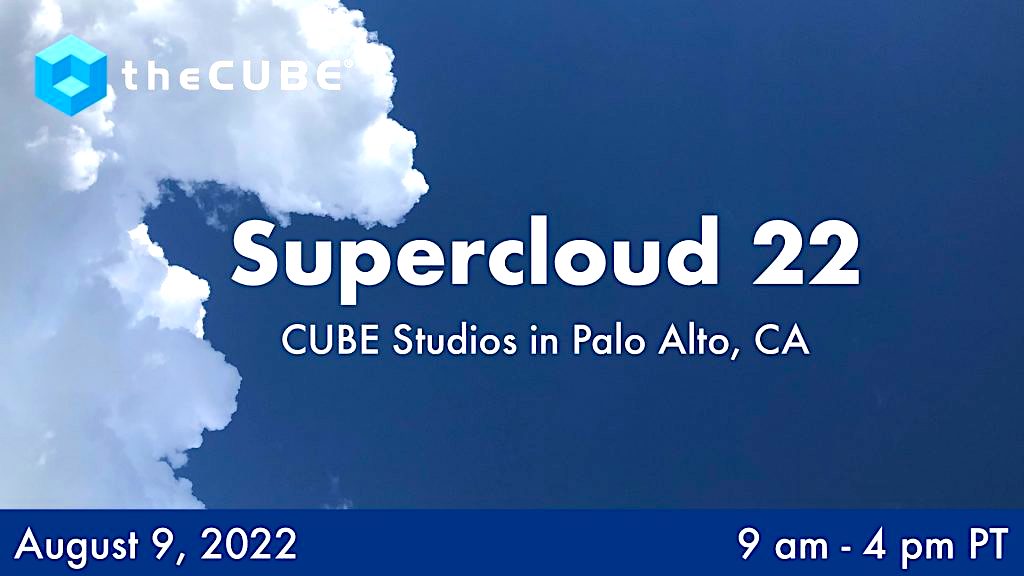 CLOUD
CLOUD
 CLOUD
CLOUD
 CLOUD
CLOUD
The term supercloud is relatively new, but the concepts behind it have been bubbling for years.
Early last decade when the National Institute of Standards and Technology put forth its original definition of cloud computing, it said services had to be accessible over a public network — essentially cutting the on-premises crowd out of the conversation. Chuck Hollis, the chief technology officer at EMC and prolific blogger, objected to that criterion and laid out his vision for what he termed a private cloud. In that post he showed a workload running both on-premises and in a public cloud, sharing the underlying resources in an automated and seamless manner – what later became more broadly known as hybrid cloud.
That vision, as we now know, really never materialized and we were left with multicloud — sets of largely incompatible and disconnected cloud services running in separate silos. The point is, what Hollis put forth – the ability to abstract underlying infrastructure complexity and run workloads across multiple heterogeneous estates with an identical experience – is what supercloud is all about.
In this Breaking Analysis we’re excited to share what we hope to learn at Supercloud22 next week.
On Tuesday, Aug. 9, at 9 a.m. PDT, the community is gathering for Supercloud22, an inclusive and open pilot symposium hosted by theCUBE and made possible by VMware Inc. and other founding partners. It’s a one-day, single-track event with more than 25 speakers digging into the architectural, technical, structural and business aspects of supercloud. This is a hybrid event, with a live program in the morning and pre-recorded content in the afternoon featuring industry leaders, technologists, analysts and investors up and down the technology stack.

After the very first re:Invent, Amazon Web Services Inc.’s annual cloud conference, we published our Amazon Gorilla post seen in the upper right above. And we talked about how to differentiate from Amazon and form ecosystems around industries and data and how the cloud would change information technology permanently.
In the upper left we put a post up on the old Wikibon.org wiki and we talked about the importance of traditional tech companies and their customers learning to compete in the Amazon economy. We showed a graph of how IT economics were changing and cloud services had marginal economics that looked more like software than hardware at scale. And we posited that this would reset opportunities for both technology sellers and industries for the next 20 years.
This came into sharper focus in the ensuing years, culminating in a milestone post by Greylock’s Jerry Chen called Castles in the Cloud, an inspiration and catalyst for us using the term supercloud in John Furrier’s post prior to re:Invent 2021.
Once we floated the concept, people in the community started to weigh in and help flesh out this idea of supercloud — where companies of all types build services on top of hyperscale infrastructure and across multiple clouds, and going beyond multicloud 1.0, which we argued was really a symptom of multivendor.
Despite its somewhat fuzzy definition, it resonated with people because they knew something was brewing. Keith Townsend, the CTO Advisor, even though he wasn’t necessarily a big fan of the buzzy nature of the term supercloud, posted this awesome blackboard talk on Twitter:
Is VMware in the pole position to provide #SuperCloud via Cross-Cloud Services, or is this a job better suited for @HashiCorp? #CTODose @dvellante @sarbjeetjohal @CareAndKickButt @ballen_clt @dhinchcliffe pic.twitter.com/P9Mxf8y2qX
— Keith Townsend (@CTOAdvisor) January 26, 2022
Keith has deep practitioner knowledge and lays out a couple of options. Especially useful are the examples he uses of cloud services, which recognize the need for cross-cloud services and the aspirational notion of VMware’s vision. Remember this was in January 2021. And he brings HashiCorp into the conversation. It’s one of the speakers at Supercloud22. And he asks the community what they think.
Which is what we’re asking you. We’re trying to really test out the viability of supercloud and people like Keith are instrumental as collaborators.

It’s probably not a shock to you to hear that not everyone’s is not on board with the supercloud meme. In particular, Charles Fitzgerald has been a wonderful collaborator just by his hilarious criticisms of the concept. After a couple of supercloud posts, Charles put up his second rendition of supercloudafragilisticexpialidocious. It’s just beautiful.
To boot, he put up this picture of Baghdad Bob asking us to “Please Just Stop.” Bob’s real name is Muhammad Saeed al-Sahhaf. He was the minister of propaganda for Saddam Hussein during the 2003 invasion of Iraq, making outrageous claims of U.S. troops running Saddam’s elite forces in fear.
Charle’s laid out several helpful critiques of supercloud, which has led us to further refine the definition and catalyze the community’s thinking on the topic. One of his issues, and there are many, is we said a prerequisite of supercloud was a superPaaS layer. Gartner’s Lydia Leong chimed in (see above) saying there were many examples of successful platform-as-a-service vendors built on top of a hyperscaler, some having the option to run in more than one cloud provider.
But the key point that we’re trying to explore is the degree to which that PaaS layer is purpose-built for a specific supercloud; and not only runs in more than one provider, as Lydia said, but runs across multiple clouds simultaneously, creating an identical developer experience irrespective of estate. Now maybe that’s what she meant… it’s hard to say from a tweet.
But to the former point, at Supercloud22 we have several examples we’re going to test. One is Oracle Corp.’s and Microsoft Corp.’s recent announcement to run database services on Oracle Cloud Infrastructure and Microsoft Azure, making them appear as one. Rather than use an off-the-shelf platform, Oracle claims to have developed a capability for developers specifically built to ensure high performance, low latency and a common experience across clouds.
Another example we’re going to test is Snowflake Inc. We’ll be interviewing Benoit Dageville, co-founder of Snowflake, to understand the degree to which Snowflake’s recent announcement of an application platform is purpose built for the Snowflake Data Cloud. Is it just a plain old PaaS – big whoop as Lydia claims – or is it something new and innovative?
By the way we invited Charles Fitz to participate in Supercloud22 and he declined, saying, in addition to a few other semi-insulting quips:
[There’s] “definitely interesting new stuff brewing [that] isn’t traditional cloud or SaaS. But branding it all supercloud doesn’t help either.
Indeed, we agree with the former sentiment. As for the latter, we definitely are not claiming everything is supercloud. But to Charles’ point, it’s important to define the critical aspects of supercloud so we can determine what is and what isn’t supercloud. Our goal at Supercloud22 is to continue to evolve the definition with the community. That’s why we’ve asked Kit Colbert, CTO of VMware, to present his thinking on what an architectural framework for cross-cloud services, what we call supercloud, might look like.
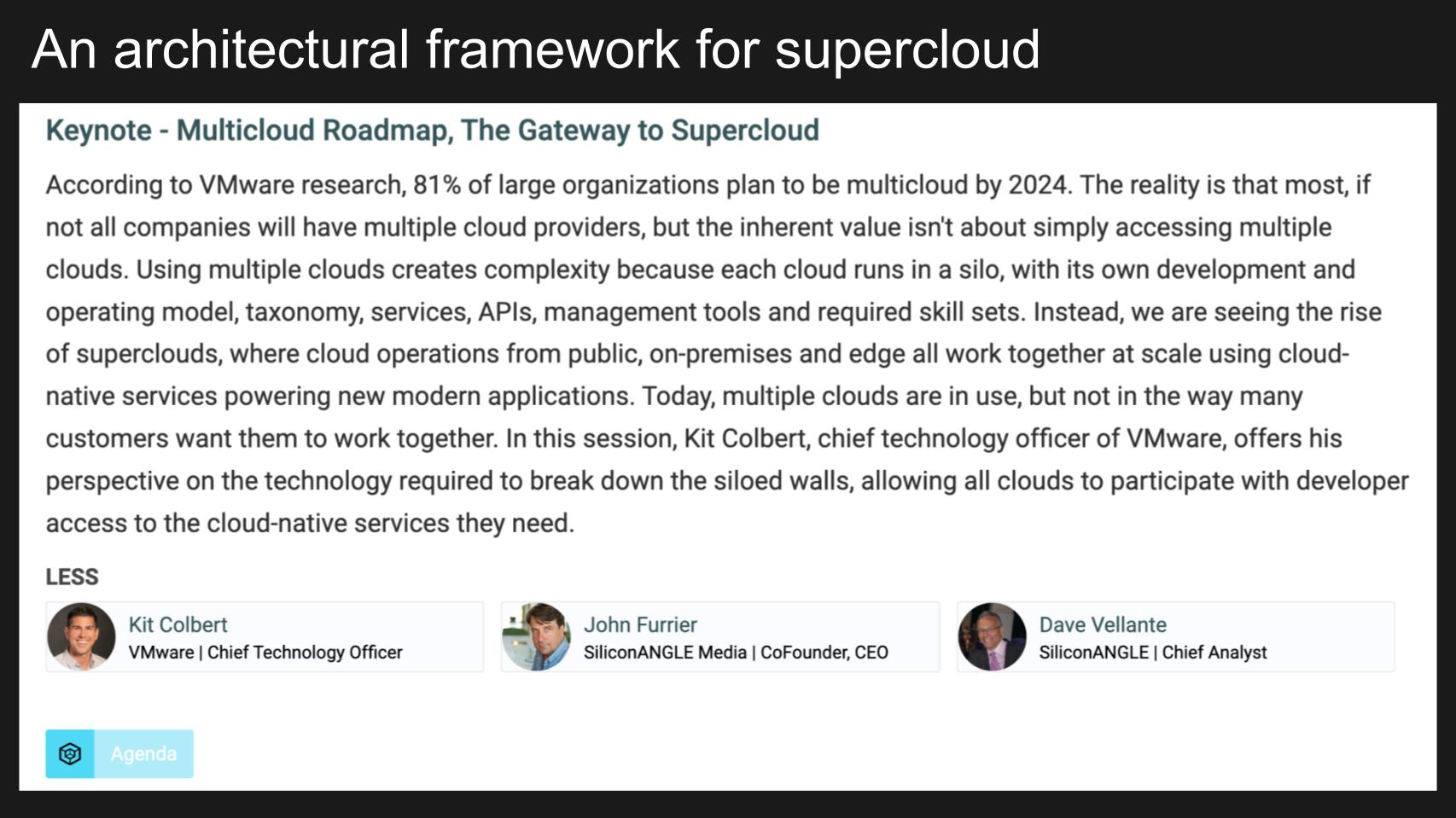
We’re also featuring some of the sharpest analysts in the business at Supercloud22 with The Great Supercloud Debate.
In additional to Keith Townsend, Maribel Lopez of Lopez Research and Sanjeev Mohan, former Gartner analyst and now principal at Sanjmo, participated in this session. Now we don’t want to mislead you and imply that these analysts are hopping on the supercloud bandwagon. But they’re more than willing to go through the thought experiment and this is a great conversation that you don’t want to miss.
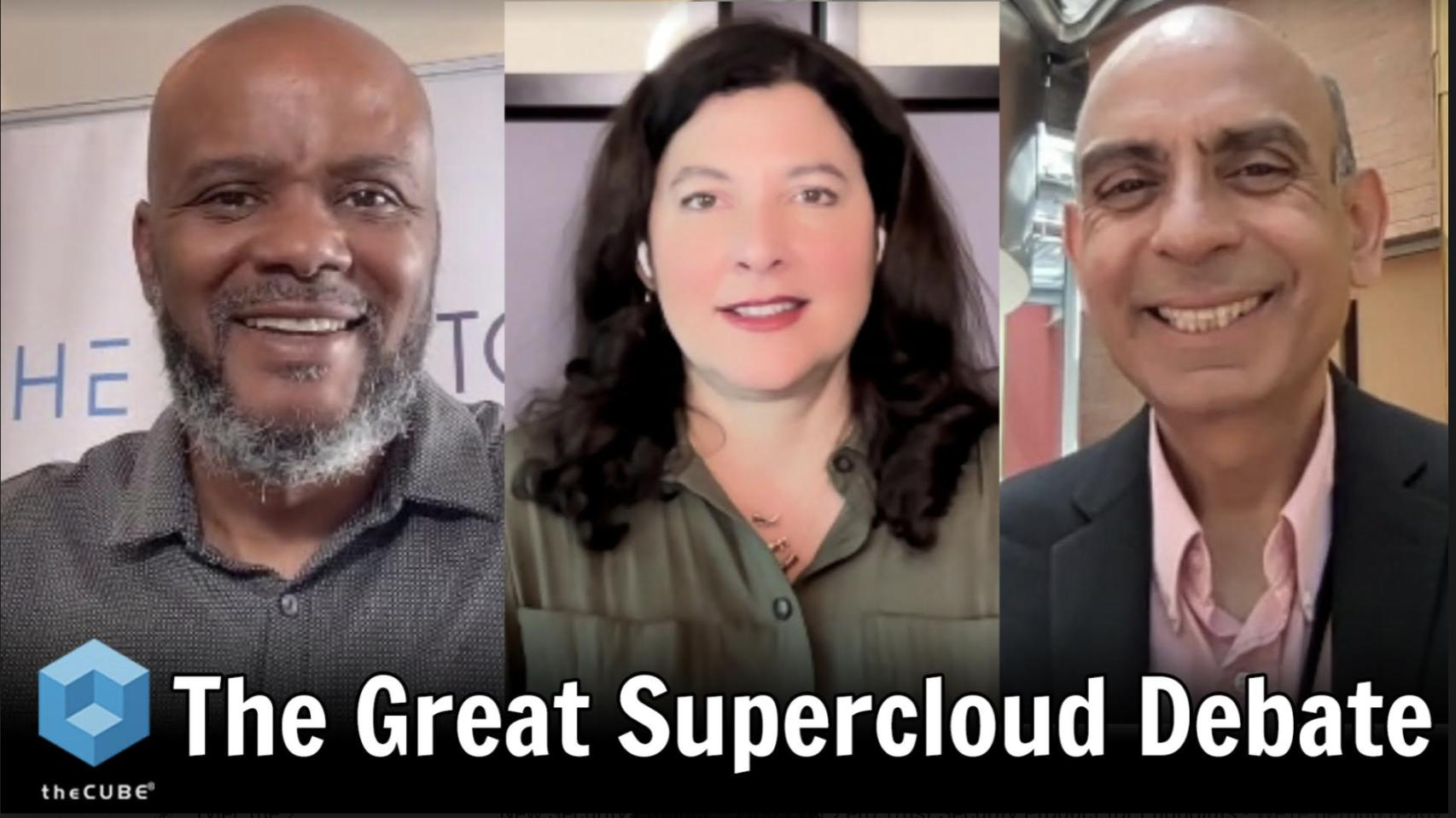
Maribel Lopez had an excellent way to think about this topic. She used TCP/IP as an historical example, saying:
Remember when we went to TCP/IP, and the whole idea was, how do we get computers to talk to each other in a more standardized way? How do we get data to move in a more standardized way? I think that the problem we have with multicloud right now is that we don’t have that. So that’s sort of a ground level of getting us to your supercloud premise.
Listen to Maribel Lopez share here thoughts on the base level requirements for supercloud.
As well, Sanjeev Mohan has some excellent thoughts on whether the path to supercloud will be achieved via open-source technology or a de facto standard platform.
Now again, we don’t want to imply that these analysts are all out banging the supercloud drum. They’re not necessarily. But it’s fair to say that, like Charles Fitzgerald, they believe something new is bubbling up. And whether it’s called supercloud or multicloud 2.0 or cross-cloud services, or whatever name you want to choose, it’s not multicloud of the 2010s.
Our goal here is to advance the discussion on what’s next in cloud. Supercloud is meant to be a term that describes the future. And specifically the cloud opportunities that can be built on top of hyperscale compute, storage, networking, machine learning and other services at scale.
That is why we posted the piece on answering the top 10 questions about supercloud, many of which were floated by Charles Fitzgerald and others in the community.
Why does the industry need another term? What’s really new and different and what is hype? What specific problems does supercloud solve? What are the salient characteristics of supercloud? What’s different beyond multicloud? What is a superPaaS? How will applications evolve on superclouds?
All these questions will be addressed in detail as a way to advance the discussion and help practitioners and business people understand what’s real today and what’s possible in the near future.
One other question we’ll address is: Who are the players that will build out superclouds and what new entrants can we expect? Below is an Enterprise Technology Research graphic we showed in a previous episode of Breaking Analysis. It lays out some of the companies we think are either building superclouds or are in a position to do so.
The way the Y axis shows Net Score or spending velocity and the X axis depicts presence in the ETR survey of more than 1,200 respondents.
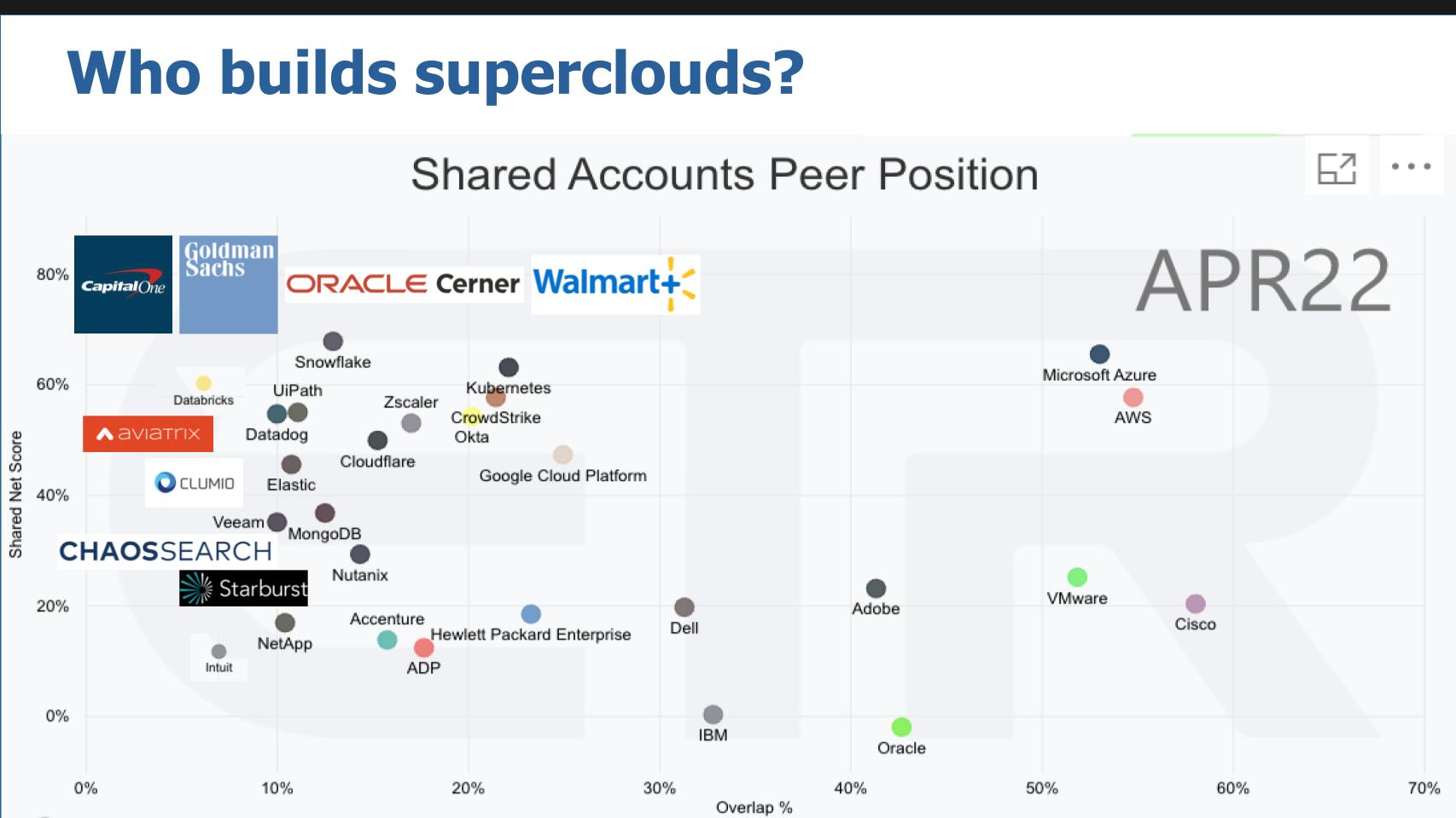
The key callouts to this slide, in addition to some of the smaller firms that aren’t yet showing up in the ETR data, such as ChaosSearch and Starburst and Aviatrix and Clumio, are the really interesting additions that are industry players. Walmart and Azure, CapitalOne and Goldman with AWS, Oracle Cerner: These, we think, are early examples of industry clouds that will eventually evolve into superclouds.
They may not all be cross-cloud today (Oracle/Microsoft is and perhaps Goldman’s cloud fits, since it connects to on-prem systems), but the potential is there. So we’ll explore these and other trends to get the community’s input on how this will play out.
We have an amazing lineup of experts to answer your questions: Technologists such as Kit Colbert, Adrian Cockcroft, Marianna Tessel, Chris Hof, Will Laforest, Ali Ghodsi, Benoit Dageville, Muddu Sudhakar, Steve Mullaney, Priya Rajagopal, Lori MacVittie, Howie Xu, Haseeb Budhani, Rajiv Ramaswami, Vittorio Viarengo, Kris Rice, Karan Batta. Investors such as Jerry Chen, In Sik Rhee, the analysts we featured earlier, Paula Hansen talking about going to market in a multicloud world, Gee Rittenhouse, David McJannet, Bhaskar Gorti of Platform9 and more.
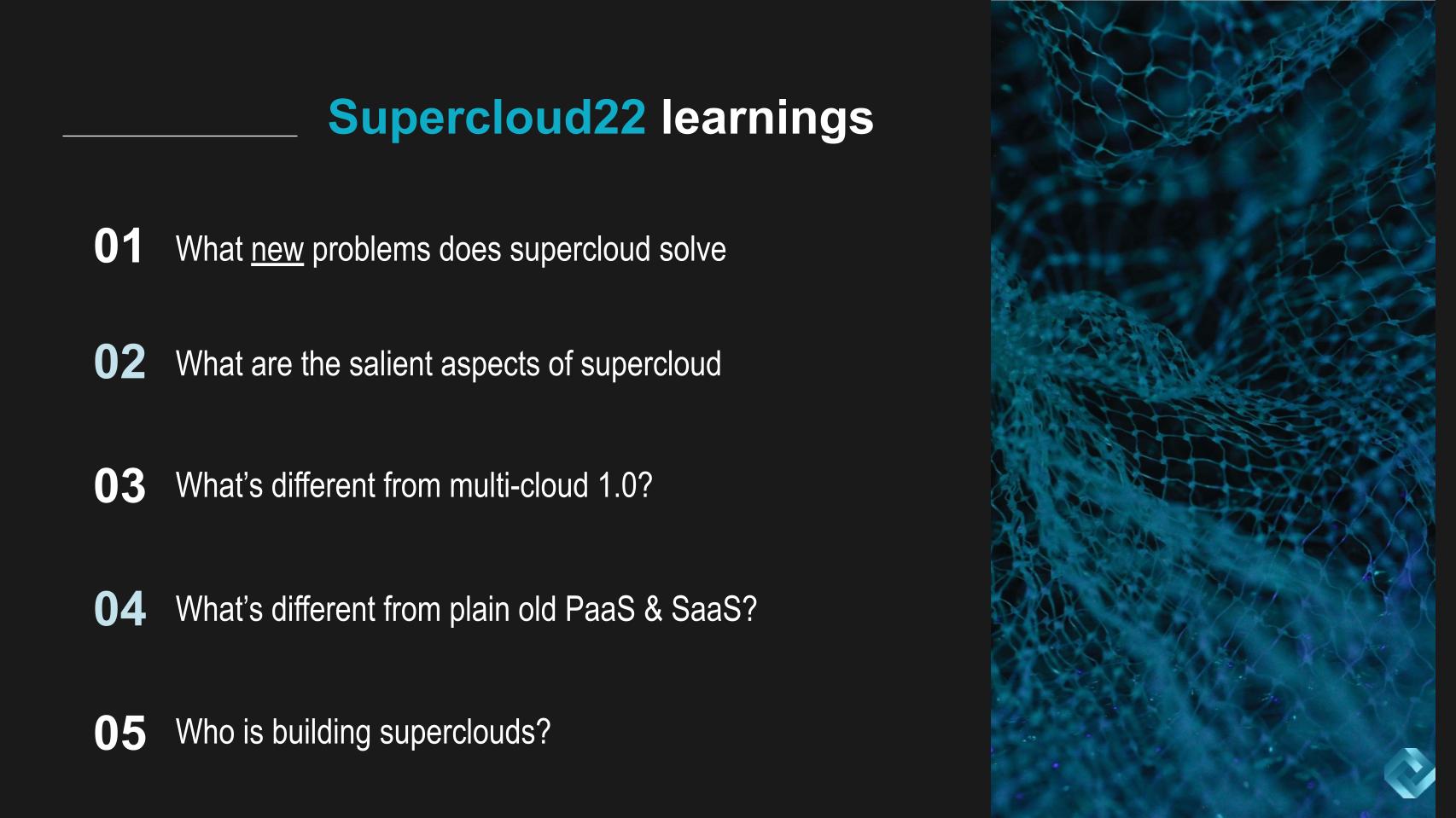
And of course you.
Please register for Supercloud22. It’s a really lightweight registration; we’re not doing this for lead gen, we’re doing it for collaboration, and if you sign in, you can chat and ask questions in real time. Don’t miss this inaugural event on Aug. 9 starting at 9 a.m. PDT.
Thanks to Alex Myerson, who does the production, podcasts and media workflows for Breaking Analysis. Special thanks to Kristen Martin and Cheryl Knight, who help us keep our community informed and get the word out, and to Rob Hof, our editor in chief at SiliconANGLE.
Remember we publish each week on Wikibon and SiliconANGLE. These episodes are all available as podcasts wherever you listen.
Email david.vellante@siliconangle.com, DM @dvellante on Twitter and comment on our LinkedIn posts.
Also, check out this ETR Tutorial we created, which explains the spending methodology in more detail. Note: ETR is a separate company from Wikibon and SiliconANGLE. If you would like to cite or republish any of the company’s data, or inquire about its services, please contact ETR at legal@etr.ai.
Here’s the full video analysis:
All statements made regarding companies or securities are strictly beliefs, points of view and opinions held by SiliconANGLE Media, Enterprise Technology Research, other guests on theCUBE and guest writers. Such statements are not recommendations by these individuals to buy, sell or hold any security. The content presented does not constitute investment advice and should not be used as the basis for any investment decision. You and only you are responsible for your investment decisions.
Disclosure: Many of the companies cited in Breaking Analysis are sponsors of theCUBE and/or clients of Wikibon. None of these firms or other companies have any editorial control over or advanced viewing of what’s published in Breaking Analysis.
Support our mission to keep content open and free by engaging with theCUBE community. Join theCUBE’s Alumni Trust Network, where technology leaders connect, share intelligence and create opportunities.
Founded by tech visionaries John Furrier and Dave Vellante, SiliconANGLE Media has built a dynamic ecosystem of industry-leading digital media brands that reach 15+ million elite tech professionals. Our new proprietary theCUBE AI Video Cloud is breaking ground in audience interaction, leveraging theCUBEai.com neural network to help technology companies make data-driven decisions and stay at the forefront of industry conversations.